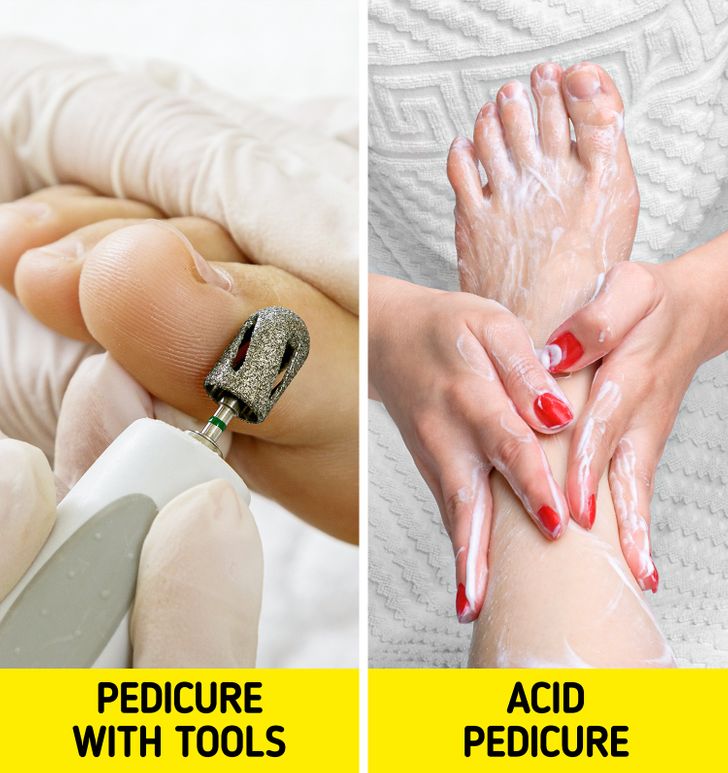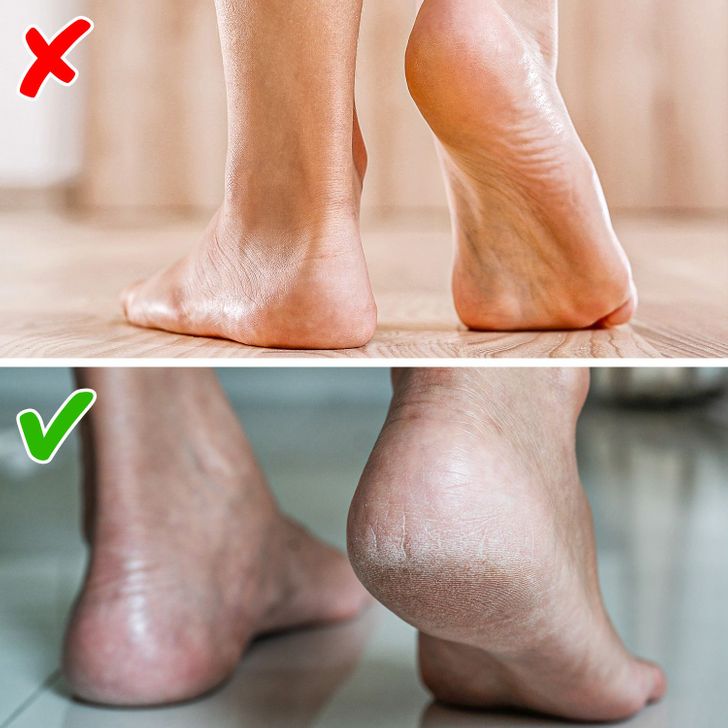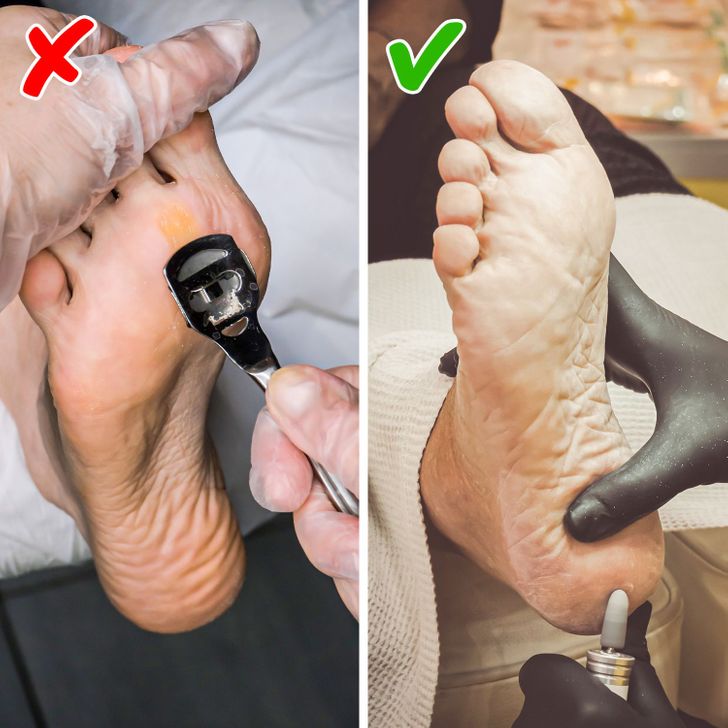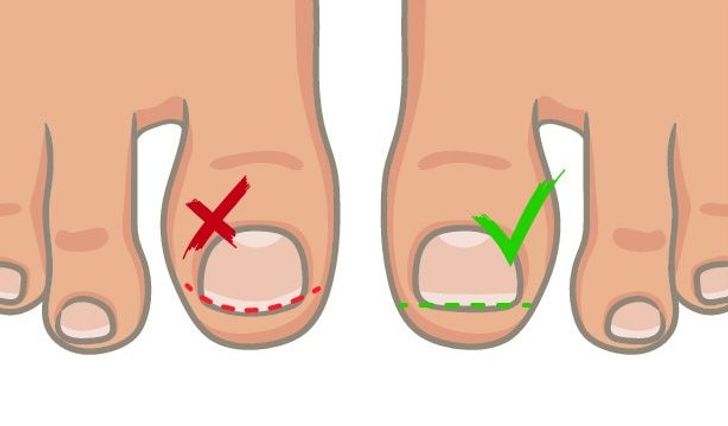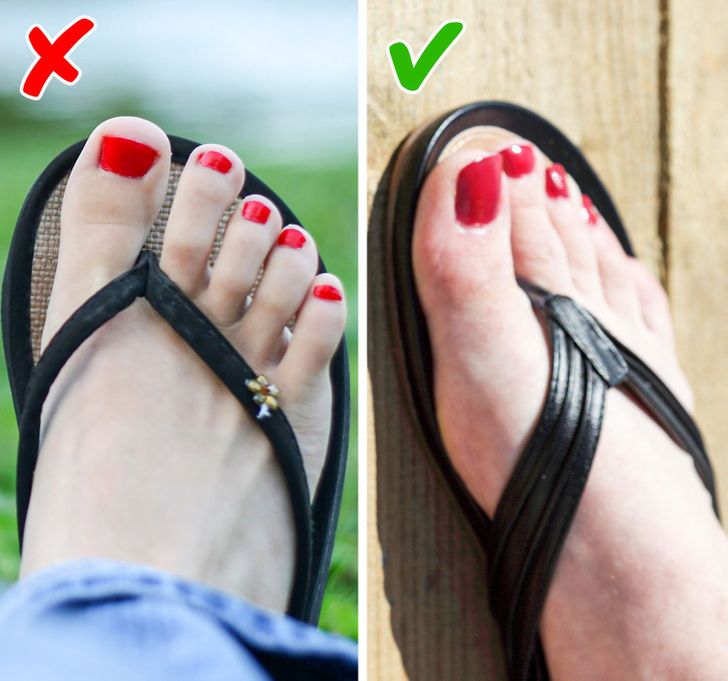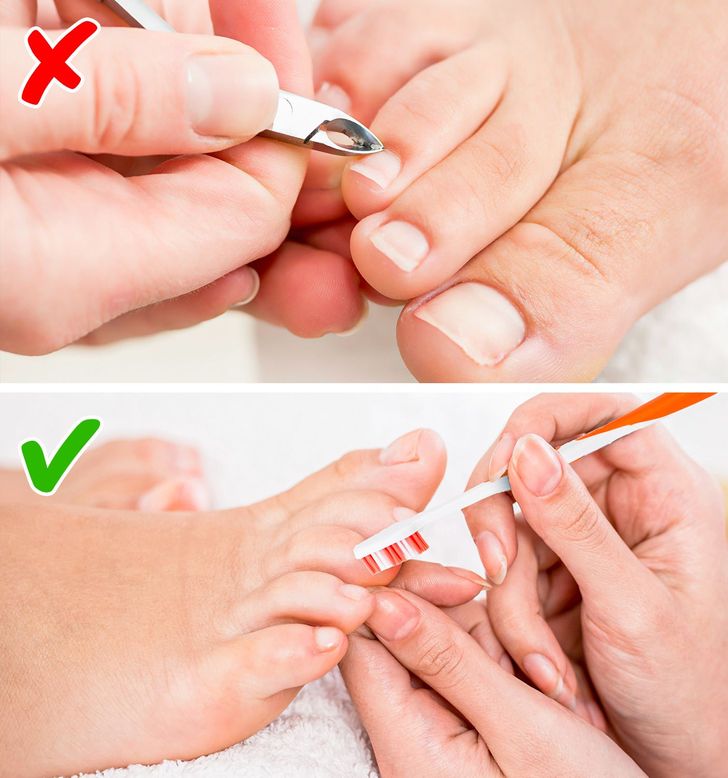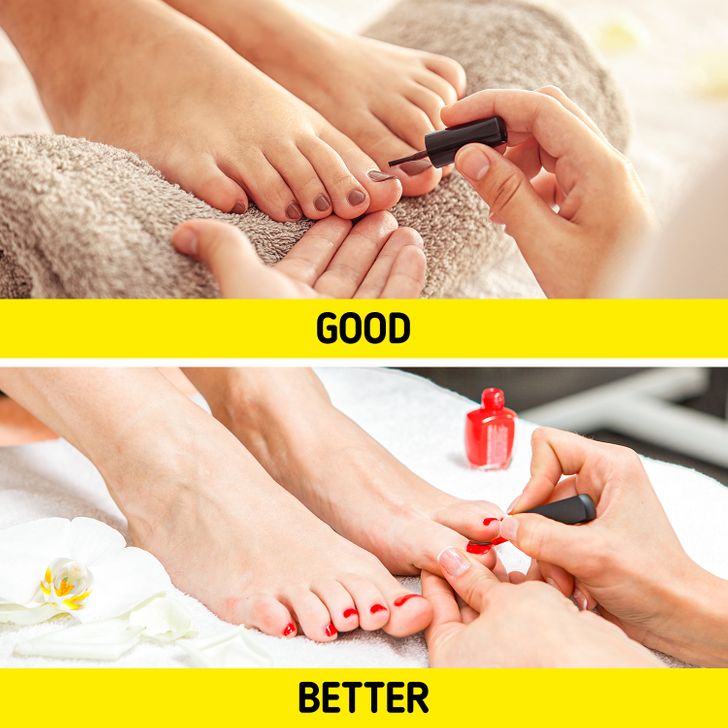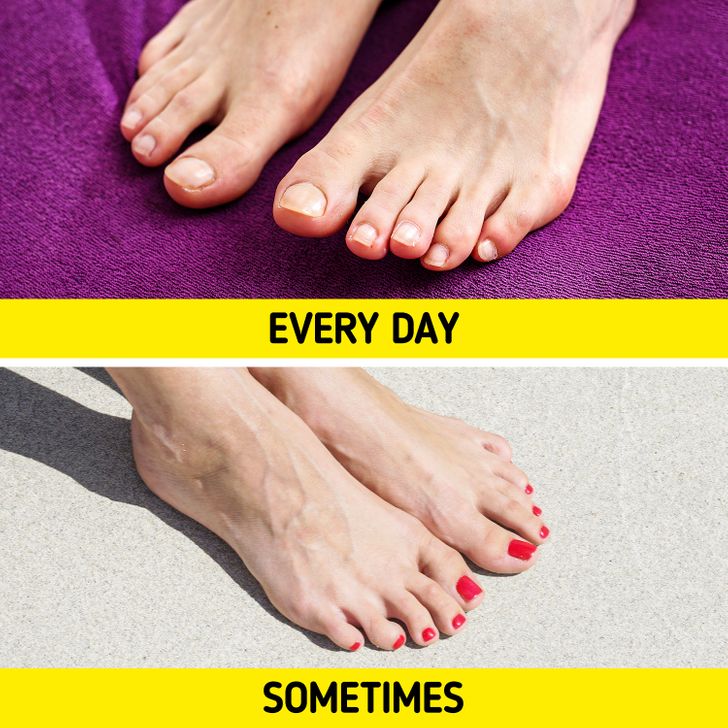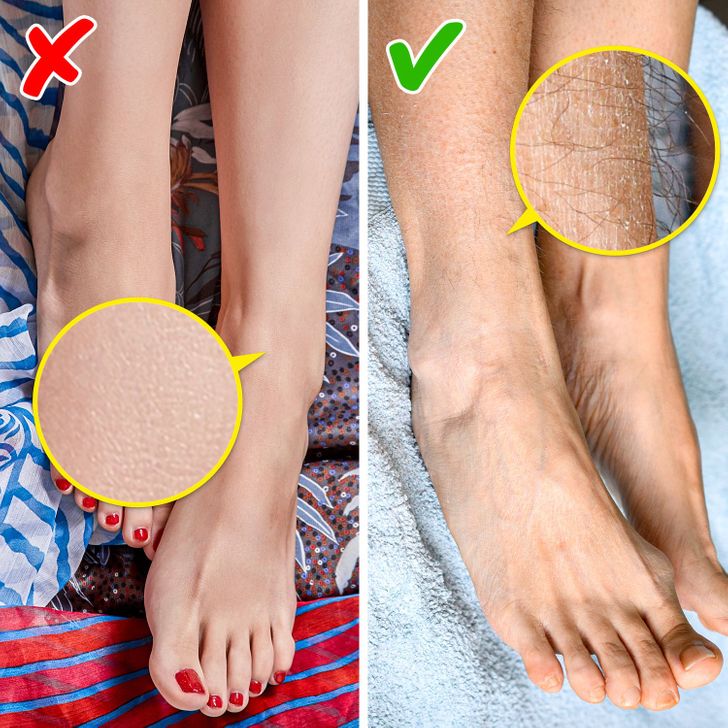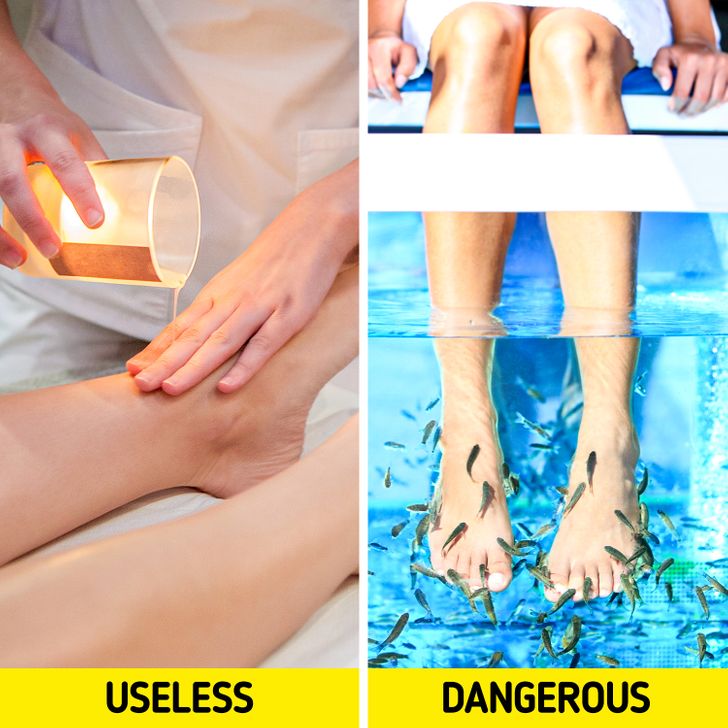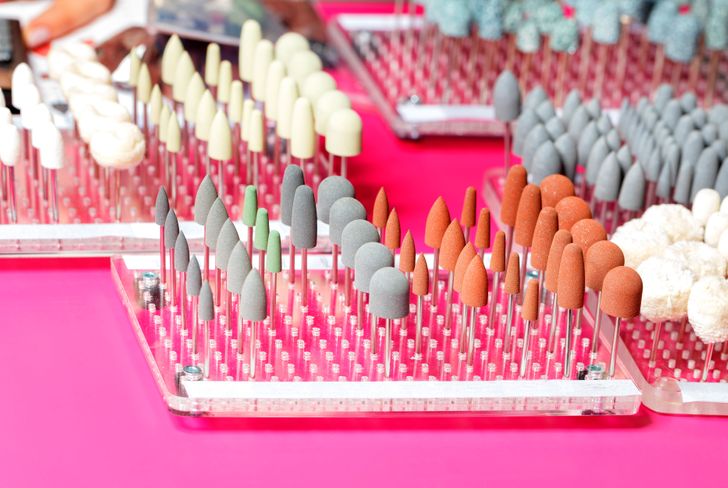Nice
13 Foot Care Tips That Only an Experienced Pedicure Technician Can Administer
It’s quite strange that there are still so many prejudices relating to pedicures in the 21st century. People, especially men, oftentimes feel too shy to visit a salon. Many of them try to cut their nails and file their heels at home before they visit a professional. Also, they ask to soak their feet in hot water because they are afraid that their feet don’t smell good. Turns out, professionals recommend not doing all this and having a more easygoing attitude toward this procedure.
We at Bright Side strive to be efficient and timely myth busters. That’s why we tried to find the answers to the 13 most pointed questions about pedicures among modern professionals. We are sure they will help turn this procedure into a less stressful event.
What type of pedicure is better
Apart from the usual types of pedicures (classic, with tools and combined), today a new type is gaining popularity — the acid pedicure. It includes treating feet with the help of special cosmetic items with acids. Professionals prefer it for several reasons.
Many of them don’t like the classic pedicure that involves soaking feet in water — it’s easy to injure the softened skin because it’s not quite clear how much keratinized skin has already been removed. A pedicure involving tools doesn’t remove all the calluses and corns as the practice shows. Moreover, both types of pedicures cause micro-traumas to the feet. As a result, the skin starts to regenerate and the stratum corneum quickly grows again.
The acid pedicure lets remove dead cells effectively for a longer period. Though this method has a drawback as well — usually, it’s more costly than other types of pedicures. In addition, you need to carefully study the composition of the agent before using it and check to see its effect on small areas of skin so you don’t have an allergic reaction or any other negative consequences.
Why you shouldn’t go for “baby heels”
The “heels like a baby” are achievable but they are an absolutely unnecessary thing. The pedicure technician can remove all the keratinized skin and make smooth pink feet, but then walking will most likely become painful for you. Therefore, it is better to leave a slight roughness than to remove everything completely.
There is a clear signal as to when the tech should stop filing — once your heel starts to feel the file. Throughout the entire procedure, the file should be felt as if through a thick sock.
How to remove keratinized skin correctly
Professionals don’t recommend using pumice stone at home. They are especially against this common ritual: to lie in the bathtub, steam the heels, and then rub the softened skin with a pumice stone. The risk of peeling off extra is too high and, in this case, a person will have even rougher heels after 3 days.
Razors for removing calluses and corns should neither be used at home nor in salons. It’s better to use a special cream or another agent for removing calluses. You can slightly peel off the dried skin with a file (glass, metal, wooden, or plastic with a sticker) after using this cream or agent.
What toenail shape is correct
Ideally, toenails should have a square shape with rounded corners. This means the outgrown nail should be cut in a straight line and then the corners can be slightly rounded. One shouldn’t go for a semicircle shape on toes — it’s one of the causes of ingrown toenails. At the same time, make sure to not leave the corners too sharp — they will cling to your shoes, which can lead to injuries.
How long should toenails be
Experts recommend not cutting off toenails at the root in order to not end up with ingrown or traumatized nails. It’s better to leave about 0.5 mm in the middle of the nail and build up a straight line to its edges. It will decrease the risk of harming the nail and cutting off any extra, together with the skin.
What to do with cracks on toenails
One also shouldn’t leave toenails too long — this can also contribute to traumatizing them, which results in the appearance of longitudinal cracks. Sometimes nails crack from the very root along their entire length. It’s impossible to do anything with this type of trauma.
Sometimes things that look like cracks are not actually cracks at all. These can be natural grooves that often appear on very thick nails. The pedicure technician will assess the condition of the toenails and either select the right corrective coating or advise you to consult a podiatrist.
Should the cuticle be removed
Most experts agree that the cuticle shouldn’t be cut off, but should instead be pushed back with a metal or orange stick. All because the cuticle is a natural protective barrier for nails, without which an infection can penetrate under them. You should only trim off burrs or heavily overgrown areas that can be scraped and that don’t bring pain.
The French pedicure master, Bastien Gonzalez, gave some unexpected advice — use a toothbrush instead of a stick for pushing back the cuticle. Its soft bristles gently push back the cuticle, while you are guaranteed to not push the nail too hard and end up with ugly bumps on it.
What color polish is perfect
Nail design is, of course, a matter of taste. But if you want to choose the color that will always look nice, experts recommend giving preference to shades of red. It’s necessary to always apply a base under bright nail polish colors, otherwise, nails can turn yellow.
How long should nail polish stay on nails
According to Bastien Gonzalez, the worst thing you can do for your nails is to keep the nail polish on for weeks or even for months. “When you cover your nails with plastic, the nail bed cannot breathe, which makes the nails weaker and causes white spots,” explains Gonzalez.
Gonzalez recommends using the tactic of “a color touch” on special occasions only, “If you approach nail polish like makeup—and make sure to properly remove it—you will have healthy nails for the rest of your life.”
Why you shouldn’t shave your legs or do a pedicure at home before visiting a professional
Experts advise not shaving your shins at least 24, but preferably 48, hours before the pedicure. During shaving, microtraumas appear on the skin, which can result in an infection at the salon.
Also, experts recommend not doing something that many shy people do — cutting toenails and filing heels at home in order to not be embarrassed in front of the professional later. It’s better to come to the salon with nails that are grown out and with unfiled heels. It will help the professional attain the necessary shape for the toenails and prevent them from removing any extra stuff from the heels.
Are trendy pedicure procedures worthy of trying?
There are numerous procedures that salons oftentimes offer to their clients that not only might not have any effect, but that also might harm your feet. For example, there is no evidence that gelatin or wax foot masks are beneficial, though many people are still convinced that they make our nails stronger. Moreover, even nail polishes containing strengthening ingredients can do harm, like increase the hardness of nails and lead to breakage.
The fish pedicure can lead to the detachment of the nail plate. Initially, this procedure was used by people with psoriasis — it was giving users tangible results in this case. But if you don’t have this illness, then you’d better not risk it at all.
Why come to a nail salon with your own tools
Many girls have their own set of professional tools and pedicure attachments that they bring to the salon. Of course, good professionals watch the cleanness of their tools and disinfect them. Nevertheless, according to experts, the risk of getting a fungus or any other infection in the salon is still there. That’s why having your own personal set of tools seems to be a sensible idea.
The list of necessary items includes files and buffers, cuticle nippers, callous removers, cuticle nail pushers, toe ropes, and even cotton towels. By the way, it’s better to visit a salon in the morning because the chances that it will be clean are much higher.
How to understand whether you can trust the pedicure professional
Make sure the professional has a license or documents confirming their qualifications and experience. Check to see whether all the tools have been disinfected and ask them to remove previously used files and tweezers. Don’t feel shy about asking the tech to wash their hands or disinfect their tools in front of you. It’s also better to refuse to use the footbath — as we have mentioned above, the professional can file off the extra skin on steamed feet. Moreover, foot bathtubs are oftentimes the dirtiest place in the salon.
Also, good techs usually ask their clients questions about their lifestyle, their athletic routine, the type of skin on their feet, and their home routine. It helps them choose the optimal type of pedicure. If the professional is not asking anything, don’t feel too shy to tell them about it yourself and make sure to search for another salon next time.
Do you prefer to do pedicures at home or in a salon?
Comments
Cool
